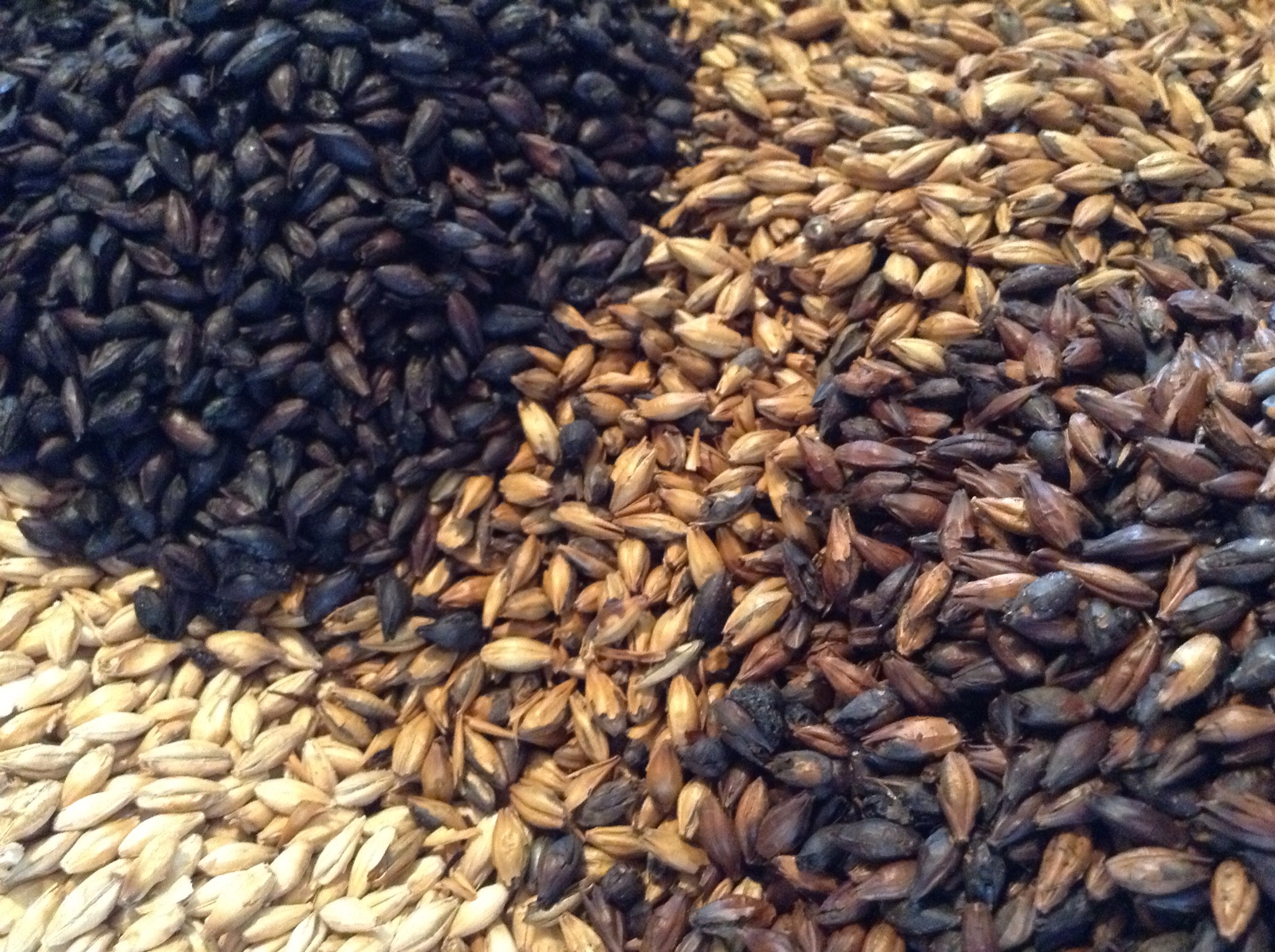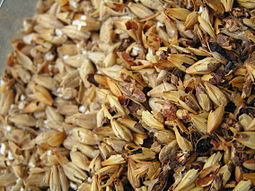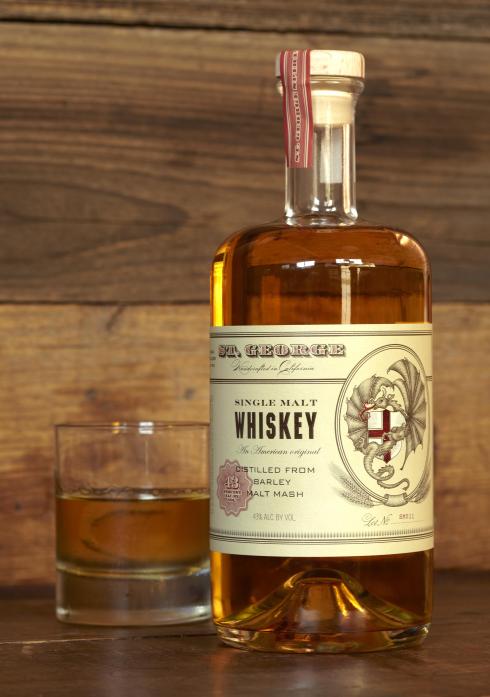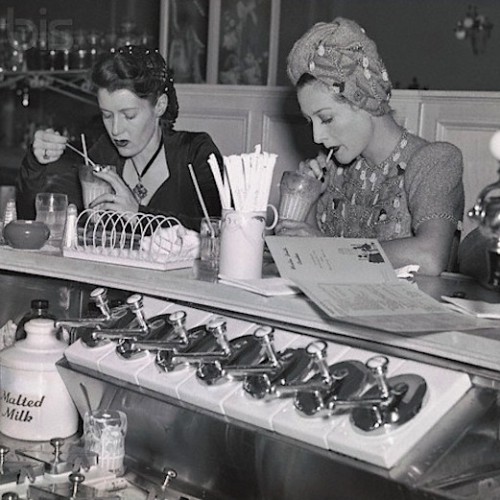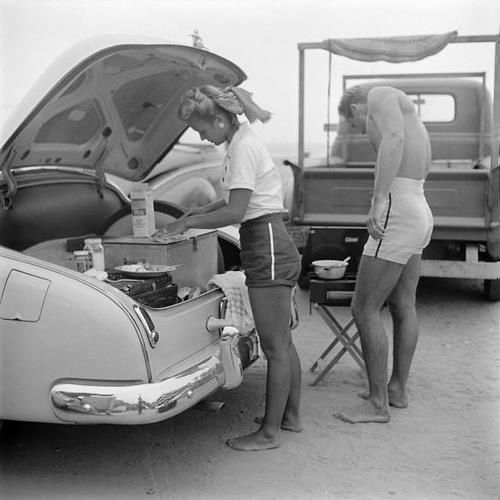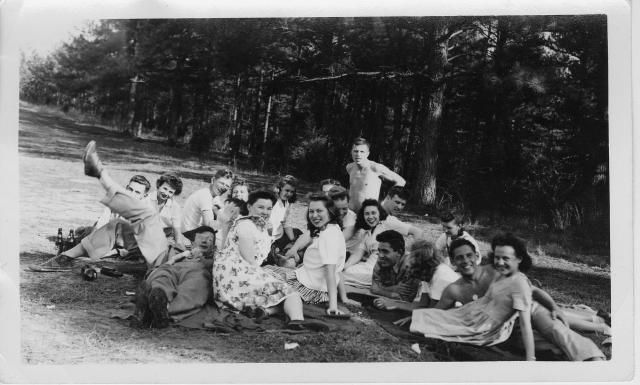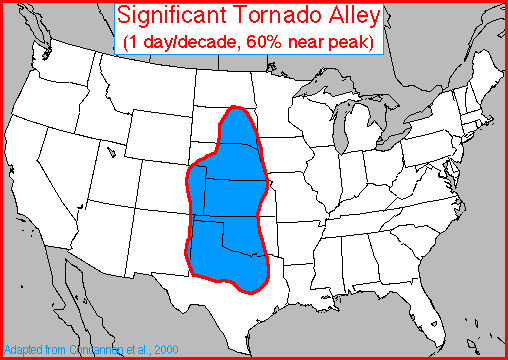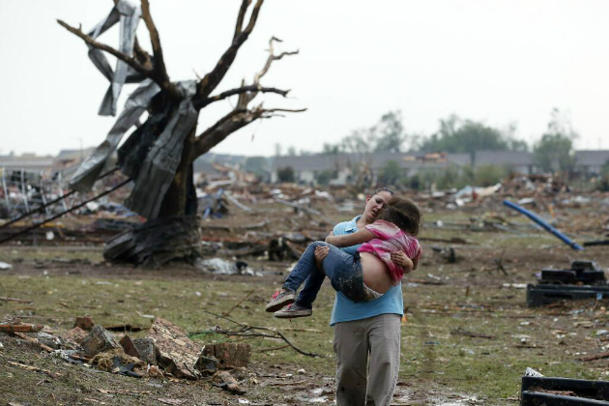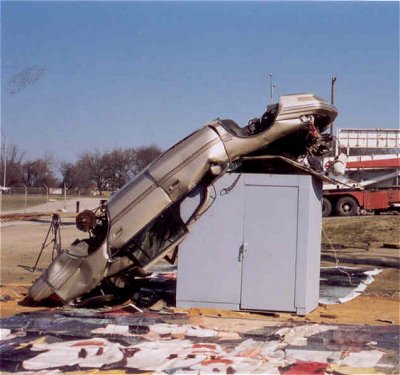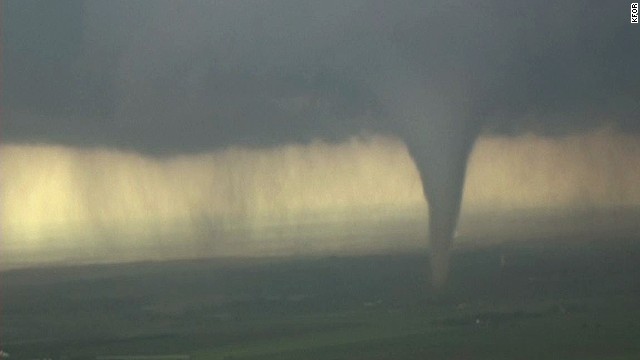I go through phases when I keep playing one of those horribly addictive match-3 games. Right now, the match-3 game in question is called Full Bloom. The things you match are flower petals, and with the game-based coins that you win, you buy flowers to decorate your game-based garden. Inane, I know. But I must . . . bring order . . . by arranging everything in sets of 3, or 4, or 6.

One of the boards in the Full Bloom game. This one is especially hard.
At first, the flowers you can buy with your game-based coins are typical things like tulips and pansies and daffodils. As you advance, the flowers get more exotic. You can also win complex arrangements, some of which include animated animals such as a diving road runner or a gopher than pokes his head out. Recently, I encountered a flower you can buy called the wreath plant. Hopefully this screen shot gives you an idea of what it looks like in the game.

I thought, that thing can't be real. It must be some arrangement you can buy in a florist's shop, where they make for you a circle of evergreens and put a ring of pink flowers around it.
A few nights after I first saw this plant in the game, it showed up in one of my dreams. (Yes, sooner or later everything shows up in my dreams.) So I thought, that does it. I have to find out if this thing really exists.
Answer: it does exist. It is a real plant. It really grows that way. It's pretty incredible-looking. First I'll show you a bunch of pictures, because seeing a whole bunch of photos is what it took to convince me that this thing is for real.

The wreath flower. Evergreen on the inside, flower on the outside.
(Photo by Ron Long, for the UBC Botanical Garden)


More of a top-down view.
(Photo from Wheat Belt Tourism)

No matter how many of these pictures I see, it still looks like a made-up plant
(Photo from Faye & David's West Australian Trip 2011)



Tons of wreath flowers growing along a roadside.
(Photo from Faye & David's West Australian Trip 2011)

More wreath flowers growing pretty much in a line
(Photo from Jammy Chicken)

Here's one last photo of the wreath flower. It really does exist.
(Photo from Gypsy Life)
Sources
Australian Native Plants Society, Lechenaultia macrantha
Florabase, Lechenaultia macrantha K. Krause
Gardening with Angus, Lechenaultia macrantha or Wreath Lechenaultia
UBC Botanical Garden and Centre for Plant Research, Lechenaultia macrantha
UK Wildflowers, Wreath Leschenaultia
Jammy Chicken, Wreath Flowers, Western Australia
Virtual Tourist, Wildflower Country!!!
Photos
Dawne's Photo Journeys
Faye & David's West Australian Trip 2011
Gypsy Life
Sheila on PBase
Wheat Belt Tourism
Edge of Nowhere

One of the boards in the Full Bloom game. This one is especially hard.
At first, the flowers you can buy with your game-based coins are typical things like tulips and pansies and daffodils. As you advance, the flowers get more exotic. You can also win complex arrangements, some of which include animated animals such as a diving road runner or a gopher than pokes his head out. Recently, I encountered a flower you can buy called the wreath plant. Hopefully this screen shot gives you an idea of what it looks like in the game.

I thought, that thing can't be real. It must be some arrangement you can buy in a florist's shop, where they make for you a circle of evergreens and put a ring of pink flowers around it.
A few nights after I first saw this plant in the game, it showed up in one of my dreams. (Yes, sooner or later everything shows up in my dreams.) So I thought, that does it. I have to find out if this thing really exists.
Answer: it does exist. It is a real plant. It really grows that way. It's pretty incredible-looking. First I'll show you a bunch of pictures, because seeing a whole bunch of photos is what it took to convince me that this thing is for real.

The wreath flower. Evergreen on the inside, flower on the outside.
(Photo by Ron Long, for the UBC Botanical Garden)
More wreath flower. Here the flowers appear to be a mixture of yellow and pink, on the same plant.
(Photo from Jammy Chicken)

More of a top-down view.
(Photo from Wheat Belt Tourism)

No matter how many of these pictures I see, it still looks like a made-up plant
(Photo from Faye & David's West Australian Trip 2011)

Close-up of the flowers that ring the greens in the middle.

Some flowers open, some still just buds. Mixture of yellow and pink.
(Photo from Edge of Nowhere)

With yellow flowers
(Photo from UK Wildflowers)

The red dots on this map of Western Australia indicate where wreath flowers have been recorded.
(Map from Florabase)

With yellow flowers
(Photo from UK Wildflowers)
- The wreath flower is a wildflower that grows only in Western Australia, particularly in Mullewa several hours north of Perth.

The red dots on this map of Western Australia indicate where wreath flowers have been recorded.
(Map from Florabase)
- The Latin name for the plant is Lechenaultia macrantha. Technically, that's misspelled. The genus should be Leschenaultia because it's named after a naturalist whose name was Leschenault. But at some point somebody left out the s, and now that's the accepted spelling.
- Other plants in the genus are shrubby, woody plants that also grow in Australia, and they may or may not have flowers. So, strange as the arrangement of the wreath flower may be, it fits right in with its fellow Lechenaultias.
- The flowers can be red, deep pink, or yellow, often with white in the middle. The branches in the middle are "twiggy" with narrow alternating leaves.
- Its favorite place to grow is on sandy or gravelly ground that has been "disturbed." One site says that means it grows where there have been bushfires. Another site says you often see them growing "in profusion" along roadsides.

Tons of wreath flowers growing along a roadside.
(Photo from Faye & David's West Australian Trip 2011)
More wreath flowers growing pretty much in a line
(Photo from Jammy Chicken)
- They only bloom for a short window of time. One site says from August to November. Another site says September through mid-October. Still another says they bloom in late winter and spring. Someone else says, "If the rains come too late this plant does not flower."
- Lots of blogs describe people driving out to see the wreath flowers, asking people in Mullewa for directions, following signs that have been put up that point to the plants, etc. Many visitors report being disappointed because after all that, the plants aren't blooming at that particular time. So it seems to be something of a challenge to find them and catch them in the act.
- Many sites say this wildflower is very difficult to cultivate. It likes sandy, well-drained, even dry soil especially in the summertime, and lots of sun. If it's true that it prefers ground that's been through a fire, it might be hard to replicate that chemical composition in the soil in your house.
- By the way, I checked with The Plant List, which is supposed to be a database of all species names of vascular plants (flowering plants and trees, etc.) and bryophytes (mosses, etc.). The database had entries for several Lechenaultias, but not the macrantha.
- I e-mailed them about it, and they responded saying they don't have a lot of information, but they have added "screen images" for what they do have. Which was heartening because it meant that even though it's not in their database, they acknowledge that the plant does exist. The e-mail included some of those screen shots of various sources that describe the plant -- one is entirely in Latin. I just checked and they haven't updated the database yet. But hopefully they'll get a record for the macrantha added soon.

Here's one last photo of the wreath flower. It really does exist.
(Photo from Gypsy Life)
Sources
Australian Native Plants Society, Lechenaultia macrantha
Florabase, Lechenaultia macrantha K. Krause
Gardening with Angus, Lechenaultia macrantha or Wreath Lechenaultia
UBC Botanical Garden and Centre for Plant Research, Lechenaultia macrantha
UK Wildflowers, Wreath Leschenaultia
Jammy Chicken, Wreath Flowers, Western Australia
Virtual Tourist, Wildflower Country!!!
Photos
Dawne's Photo Journeys
Faye & David's West Australian Trip 2011
Gypsy Life
Sheila on PBase
Wheat Belt Tourism
Edge of Nowhere
